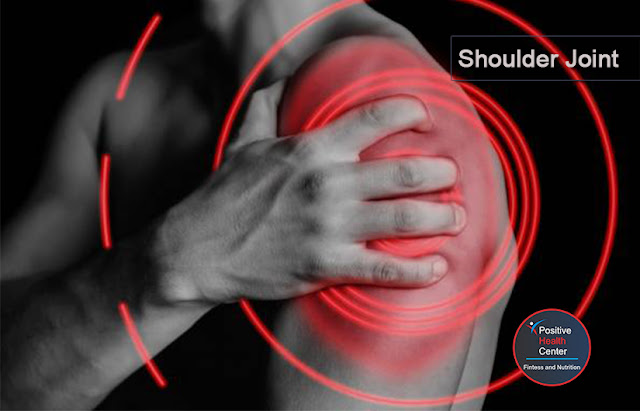Weight training is popular - not only in men but also in many women! Regular strength exercises such as with dumbbells or on the leg press promote the development of muscle mass and the reduction of fat deposits. However, an individually adapted training program is important in order to avoid harmful stress and injuries.
| Sports injuries - weight training | Prevent |
| Joint and muscle damage | For whom? |
| Knees, shoulders, and back | |
 |
| Sports-injuries---weight-training |
Risk of injury during weight training
Anyone who practices endurance sports should additionally undergo strength training. Building and maintaining muscles stabilize the body and improves metabolism. But even with the strength training, you can hurt. This is especially true if it is intensively operated - for example in the form of bodybuilding.
Joint and muscle damage
The strong pull of the muscles due to the high weight load and the long lifting distance from the floor to well over the shoulders with stretched elbows load all joints of the weightlifter. In the foreground are the consequences of the permanent strain, less acute injuries. Weightlifters train almost always in the club and are rarely without warm-up training or with existing medical conditions to the dumbbells. The injury rate in bodybuilding is higher than in squash but much lower than football.
Depending on the focus of the training, damage and injuries to certain joints, muscles, and tendons can be found on the bone. Almost always they are the result of a fault or overload. Accidents are a rarity. Fitness athletes often pull on muscle strains, which heal completely if properly treated. Muscle fiber tears, muscle or tendon tears are usually the result of stress without sufficient warming up. The most common is the tearing of the great pectoral muscle (pectoralis major muscle).
Knees, shoulders and back
knee
The knees of a weightlifter have to cope with maximum demands. The fact that the body can really lift itself up with the weight of the dumbbell is, above all, an achievement of the great thigh muscle (quadriceps muscle). Its tendon runs over the front of the knee and is guided over the kneecap to the lower leg. Therefore, injuries of the patella and inflammation of the tendons above and below the kneecap are not uncommon. Also, signs of wear (arthrosis) on the knee cartilage and menisci can easily arise.
In bodybuilding, knee problems are much rarer. However, women suffer twice as often from knee problems as men. The reason is probably that women train their legs significantly more than men and incorporate many squats into their exercise program.
Shoulder Joint
The shoulder joint is particularly prone to injury because it has little bony stabilization. This applies to weightlifting and bodybuilding alike. Especially the shoulder muscles provide stability. The smaller shoulder muscles together with their tendons form the rotator cuff, which guides the joint and protects the joint capsule. If only one of these tender muscles or the tendon breaks, the rotator cuff rupture occurs.
 |
| shoulder-joint |
This happens when the weight over the shoulder is held too far behind the body axis and the athlete tries to centralize it over the head again. Bodybuilders do not immediately contract a rupture of the rotator cuff, but tendon inflammation of these muscles. Also, damages in the shoulder joint or in the joint between clavicle and shoulder blade (Akromioklavikulargelenk) are relatively frequent.
Elbow & wrist
Elbow and wrist injuries are most common among bodybuilders. Particularly affected are tendon attachments in the area of the elbow (insertion tendinopathies). Here it comes to chronic irritations, similar to one.
 |
| Elbow-&-wrist |
Back Injuries
Contrary to popular belief, back injuries are rare among weightlifters. They usually have superbly trained core muscles that prevent spinal injuries. Nevertheless, muscular tension, inflammation of the back muscle attachments on the pelvic blades or overload reactions of the vertebral joints are possible.
Unlike bodybuilders: About 16 percent of all injuries are spinal injuries.
Prevent
Weightlifters and bodybuilders need one thing above all else: The right technique! Let an experienced trainer guide you and do not do any experiments. Your trainer picks the right exercises and oversees the correct implementation. Any training in the limits of one's own performance or especially in the border area of joint mobility is taboo in popular sports.
Before the weight training is a general warm-up phase with at least 20 minutes running or cycling. This is followed by stretching and stretching exercises that can prevent muscle and tendon injuries as well as exercise-related muscle shortening.
The correct sports equipment in all strength sports stable indoor sports shoes with a solid sole, in weight lifters it is also reinforced at the heel. A weight-lifting belt increases the pressure in the abdominal cavity and thereby stabilizes the spine from the front. That is why it is recommended for all spinal exercises. Bandages protect against wrist overloads and are part of the equipment of every weightlifter and some, very performance-oriented, bodybuilders.
For whom?
Due to the growth processes in the body intensive strength training is recommended only for 15 years, but then it is possible with adaptation to their own performance into old age. Weightlifters should be less than 185 cm and not too long arms and legs. Anyone who has orthopedic diseases in the spine and knee, as well as unstable joints, is predestined neither for weight lifting nor for bodybuilding.
Sports injuries - weight training
 Reviewed by sajid
on
Thursday, October 31, 2019
Rating:
Reviewed by sajid
on
Thursday, October 31, 2019
Rating:
 Reviewed by sajid
on
Thursday, October 31, 2019
Rating:
Reviewed by sajid
on
Thursday, October 31, 2019
Rating:







No comments: